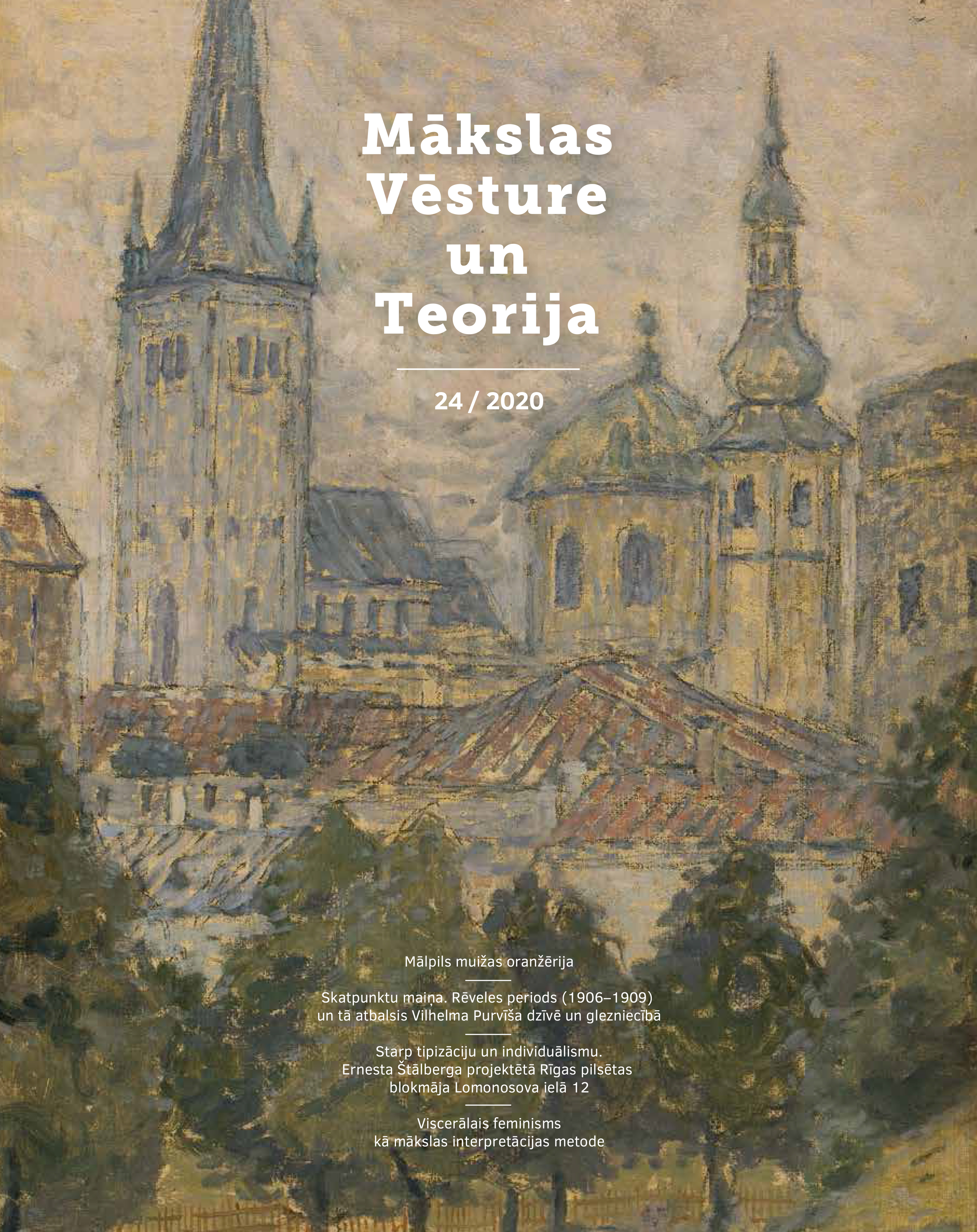Viscerālais feminisms kā mākslas interpretācijas metode
Visceral Feminism. A Method for Art Interpretation
Author(s): Jana KukaineSubject(s): Gender Studies, Cultural history, Visual Arts, Aesthetics, Social history, Gender history, Contemporary Philosophy, History of Art
Published by: Mākslas vēstures pētījumu atbalsta fonds
Keywords: Visceral feminism; feminist theory; feminist art; body politics; Artemisia Gentileschi; Rasa Jansone
Summary/Abstract: The article introduces the notion of visceral feminism and advances its usage as a methodological framework for art interpretation capable of addressing urgent political and artistic challenges, as well as histories of traumatic legacies and imperial powers (among them, the peculiarity of the post-Soviet condition). Drawing encouragement from feminist political theory, carnal aesthetics and new materialism, visceral feminism enhances corporeality in order to address the visceral dimension of the body and the capacity for a liveable life. Due to the multitude of theoretical references, the first part of the article is devoted to providing an insight into the continuity of visceral feminism and the leading traditions of feminist philosophy, especially of feminist aesthetics and theories of the body. It should be noted that in the academic debates of the last decade, the term ‘visceral’ has already obtained some theoretical coverage. However, its potential for grounding a methodological approach for a profoundly feminist art interpretation, especially within the political framework of the Eastern Europe, has not yet been elaborated. After providing a brief summary on the theoretical context of visceral feminism, the term is defined and examined in detail by incorporating theoretical insights of both post-structural theory (notably, Judith Butler) and the new materialism (Barbara Bolt, Jane Bennett etc.). Thus visceral feminism is understood as a viewpoint which prompts the issues of bodily matter, its liveliness, intrinsic vitality and fluxes of dynamic life forces, as well as articulating the body’s ability for agency and resistance, while at the same time preserving the post-structural findings about how ideology and social norms shape and transform our bodies. From this perspective, the political claims for a liveable life can be made which become the foundational question also for visceral art interpretation: how can art affect bodies viscerally? Rather than examining the immediate psychosomatic reactions to artworks, the aesthetic position of visceral feminism focuses on the performative powers of art to transgress the art world’s institutionalized framework and its common art audience. The capacity of art to perform, to bring into being or, to borrow a term from John Langshaw Austin, to do (emotional, conceptual or material) things, is of crucial importance. These are the qualities that have the utmost impact and ultimately reveal the inherent political potential of art to transform not only society, but also to affect bodies on a visceral level. While social changes may take decades and are sometimes hard to grasp, visceral transformations (from tears to laughter, from shame to anger, from pain to solace) are straightforward – they are a crucial part of everyday lived experience. However, the insights into these experiences are seldom universal or self-obvious. In pursuit of embodied knowledge, visceral feminism draws from the standpoint of feminist theory that questions both the possibility of objective knowledge and the neutrality of cognition. Instead, a visceral standard for knowledge is established; in order to claim epistemic authority, one must not distance herself, but rather immerse into the bodily matter. The perspectives of such investigations are often reinforced by (a feminist) art practice and therefore can be addressed through theoretical art research. For the purpose of visceral scrutiny, two artworks have been selected – the painting “Susanna and the Elders” by Artemisia Gentileschi (1610) and a work by Latvian artist Rasa Jansone, “Self-Portrait. Exercise Machine I” (2017). Both are examined from the perspective of visceral feminism. This enables us to account for a variety of issues of the marginalization and oppression of women embedded both in the gendered art history and today’s culture, as especially manifest in the patterns of passive victimhood and sexual objectification. While the juxtaposition of the iconic work of feminist art scholarship from the Baroque era (Gentileschi) and a contemporary painting which draws on post-Soviet legacies and the neo-liberal cult of a superwoman (Jansone) may seem daring, the encounter of the two artworks succeeds in encouraging a transgenerational and transnational feminist genealogy in arts, based on the visceral experiences of bodies, their capacity to act and to strive for a liveable life. Both paintings highlight the scope of bodily resistance and thereof put forward a feminist materialist critique of the Western art canon as well as the oppressive body politics of today. By addressing the questions of art’s animacy and its agentic potential in intervening and engaging with the materiality of the world, visceral art interpretation aims at promoting care, empathy and love which make life more liveable.
Journal: Mākslas Vēsture un Teorija
- Issue Year: 2020
- Issue No: 24
- Page Range: 63-75
- Page Count: 13
- Language: Latvian
- Content File-PDF

